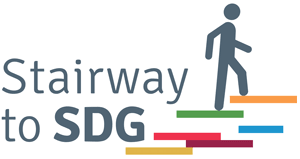Introduction

Projections on SDG's and 70th Anniversary of the UN (By UN DESA (CC BY-SA 4.0))
The Millennium Development Goals were adopted as a global partnership to reduce extreme poverty by 2015. Following the agreed deadline, in September 2015, the 193 members of the United Nations adopted the 2030 Agenda for Sustainable Development, consisting of the Sustainable Development Goals, in addition to the agreements of the Addis Ababa Action Agenda and the Paris Agreement on climate change.
This new framework agreement is formulated around five axes: planet, people, prosperity, peace and alliances. It is articulated in 17 goals, 169 targets and 230 global indicators, being the first time that social agenda with environmental agenda are undertaken issues.
In addition, citizens now play a key role in monitoring the implementation of the Goals and in putting pressure on Governments to reach the most marginalized groups. The goals are based on the idea of partnership; they cannot be achieved without the cooperation and participation of everyone.
Each of us is invited to collaborate on the fulfilment of this Agenda by adopting simple gestures in our daily and professional lives.
But before we start, do we know exactly what each Sustainable Development Goal is about? Let’s discover them together!
Learning Objectives
- Systems thinking competency
- Critical thinking competency
- Self-awareness competency
Instructions
Step 1) Project introduction (15 minutes)
Before starting with activities designed to work on the SDGs it is important that the facilitator introduces the project to the students.
For them you can use the website www.stairwaytosdg.eu where you can find all the available information. To draw the attention of students the teacher can emphasize different points, for instance:
- indicate that this is a European level project and that other young people from other training institutions in other European countries are participating in this project like them;
- all activities are designed for the professional sector, therefore we will address personal aspects but also extend knowledge to professional levels;
- all activities purposefully present little theoretical parts, in order for participants to actively learn through experience;
- the strong and innovative point of the project is that after the theoretical part it always proposes a call to action where students can become agents of change by acting first hand and encouraging changes at a social level or in their professional sector.
Step 2) Explanation of the app (between 15 and 30 minutes)
Before testing their knowledge of the SDGs, students will be invited to register on the https://www.stairwaytosdg.eu/about-app website where they will find a series of questions about their own behaviour related to the SDGs.
In this APP they will be able to see if their lives are more or less sustainable in relation to the 2030 Agenda. For the amount of questions it is advised that this activity begins in the classroom and that it is completed at home individually, indicating a period of time for its completion ( one week, 10 days...).
Step 3) Meet all the SDGs (60 minutes)
Once all students have filled out the questionnaire, it is time to explore more closely what are the 17 Sustainable Development Goals of the 2030 Agenda.
- Divide the students into groups of 4 or 5 people.
- Distribute to each group a printed sheet with all the SDGs on it, alternatively you can project them on the wall or digital slate.
- The facilitator will give 15-20 min of time for each group and student to read the SDG information found on the project website (https://www.stairwaytosdg.eu/sdgs )
- Each student or group must have a computer device with an internet connection (mobile, tablet, pc)
- It is important that you keep as much information as possible about SDGs, so as to make a timed multiple answer later.
- The game begins.... 3...2.. 1.Let’s play! The facilitator will project the Quiz (https://play.kahoot.it/v2/?quizId=707dfe5c-66e8-495d-a294-b9e11f260793 ) on the whiteboard or wall and each group will have to answer each question as quickly as possible. Each correct answer in the shortest possible time corresponds to a higher score, and a higher chance of winning.
- After having congratulated the winning group the facilitator will engage a reflexion with the students.
- What is sustainable development? Which ODS has caught your attention? And why? Which ODS is most related to your field of study?What SDGs would you like to delve into? And why?
- Once this part is completed, the facilitator can introduce the students to the ODS that he or she planned to develop with them, or look for ways to develop the ODS that has sparked more interest among the students.






